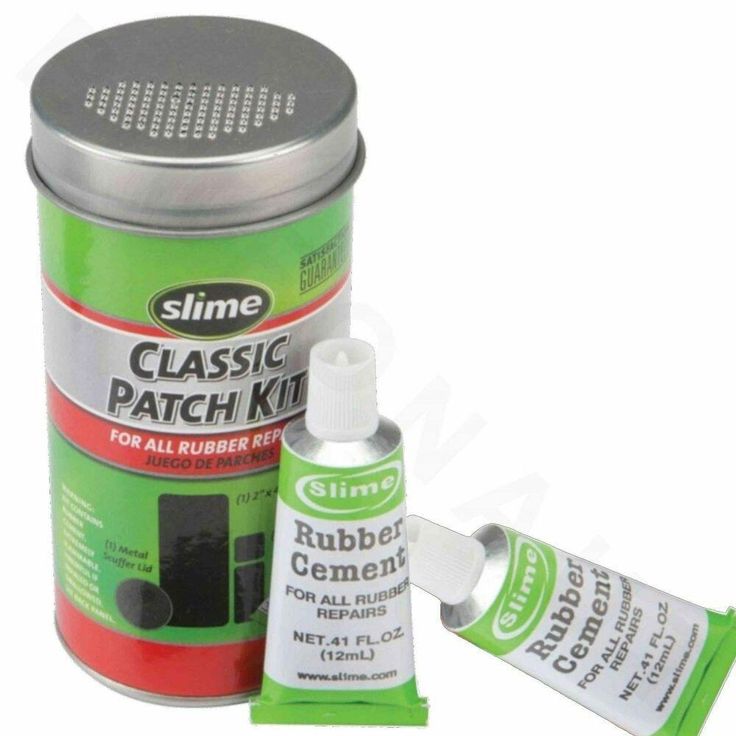Accidentally run over a nail or find out that you have a puncture or hole in one of your tires? You probably want to fix it quickly and get back on the road as soon as possible.
If you’re on a budget and want to get it done yourself, you’re in luck because rubber cement is one of the most cost-effective methods of fixing your tires.
Check out our guide to everything you need to know.
You can plug or patch your punctured tire as long as the hole is not bigger than a quarter of an inch and the location of the hole is not too close to the sidewall.
Consider checking: How To Use A Tire Plug Kit
Though you don’t need to be an expert on it, knowing how to properly handle rubber cement and understanding what it’s made of is necessary if you want to learn how to use rubber cement on a tire correctly. It is acid-free and dries without wrinkling. As long as rubber cement is tightly contained in proper storage, it can last indefinitely.
However, air exposure causes rubber cement to thicken and renders it unusable. To prevent your rubber cement from drying out, you can put a little grease or Vaseline around the opened nozzle. It will serve as an air sealant and prolong its use.
Rubber cement contains hazardous, highly flammable ingredients such as trichloroethane, heptane, and acetone.
Be sure to only use rubber cement in a well-ventilated area. An open garage is a good choice, but if you need to work indoors, allow fresh air to circulate through an open window. Repeatedly sniffing rubber cement can cause severe damage to your kidneys, lungs, and brain.
Getting a tire repair kit makes the process of how to use rubber cement on a tire easier; you’ll have all the tools you need to complete the job correctly.
However, the type of kit and instructions you need will depend on whether you’re operating a car or a truck.
Along with quality rubber cement, you’ll need a good patch. The rubber cement allows patches to adhere to the inside of tire walls. Most standard tire repair kits have:
Not sure if you need to plug or patch your tire? We’ll help you decide below.
Plugs are best suited for small holes away from the sidewall of the tire. Whether you’ve treaded on a small nail, screw, or puncture, you can fix your tire by plugging.
Do not plug if:
Patches work well only if the puncture is less than a quarter-inch in diameter. However, the location of the puncture is very important in determining if a patch will be effective.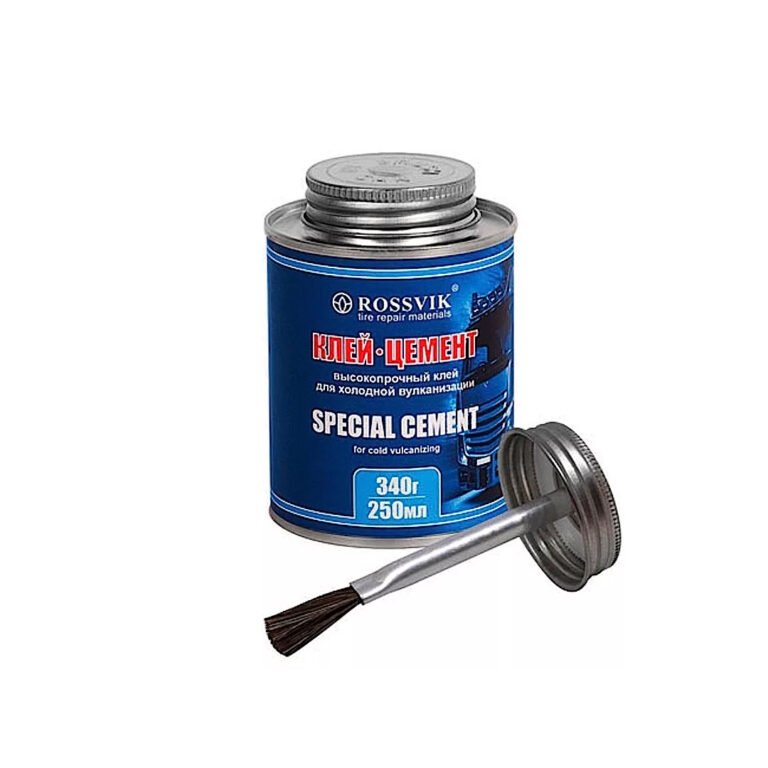
Unlike plugs, patches are better for bigger holes that are closer to the sidewall. This does not mean that a patch can repair a sidewall. If your tire’s sidewall is damaged, then you need to get your tire replaced.
Do not patch if:
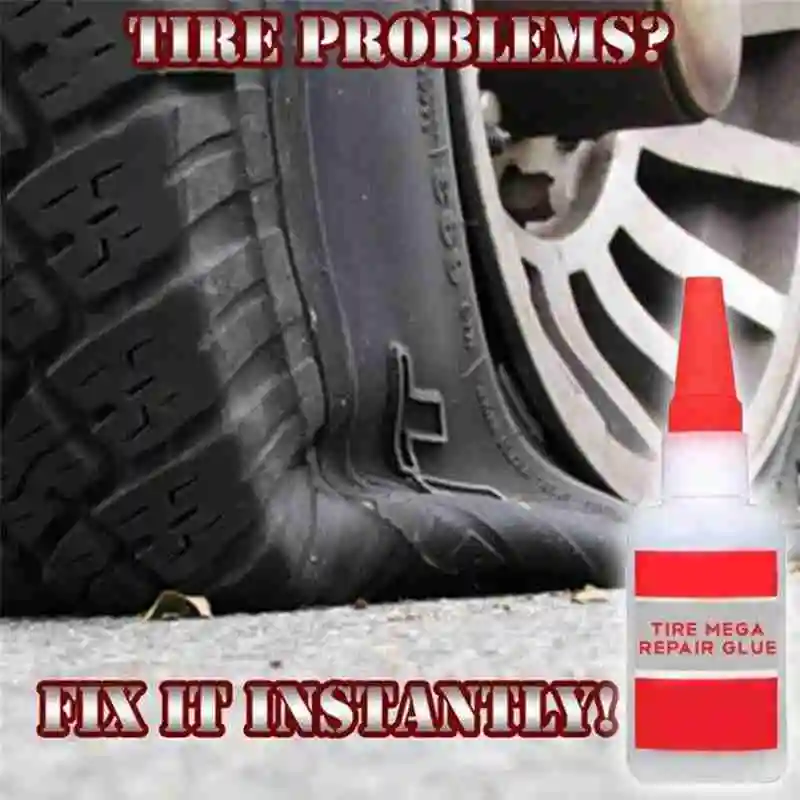 Work into the material.
Work into the material.Rubber cement can dry in a hot, dry environment in a minute or two. It takes about five minutes for a tire patch to dry. It takes fifteen minutes for it to cure, and by then, you can air the tire up and recheck for leaks.
As long as you’ve applied the rubber cement evenly, you won’t have to worry about leaks after checking.
Consider checking: How To Fix A Tire Rim Leak
Many people say that you can drive with a plugged tire for about seven to ten years, but we recommend proceeding with caution as it is most effective for a few months.
If the location of the hole is too close to the sidewall and there are installation issues, the tire may not last as long as you would like it to.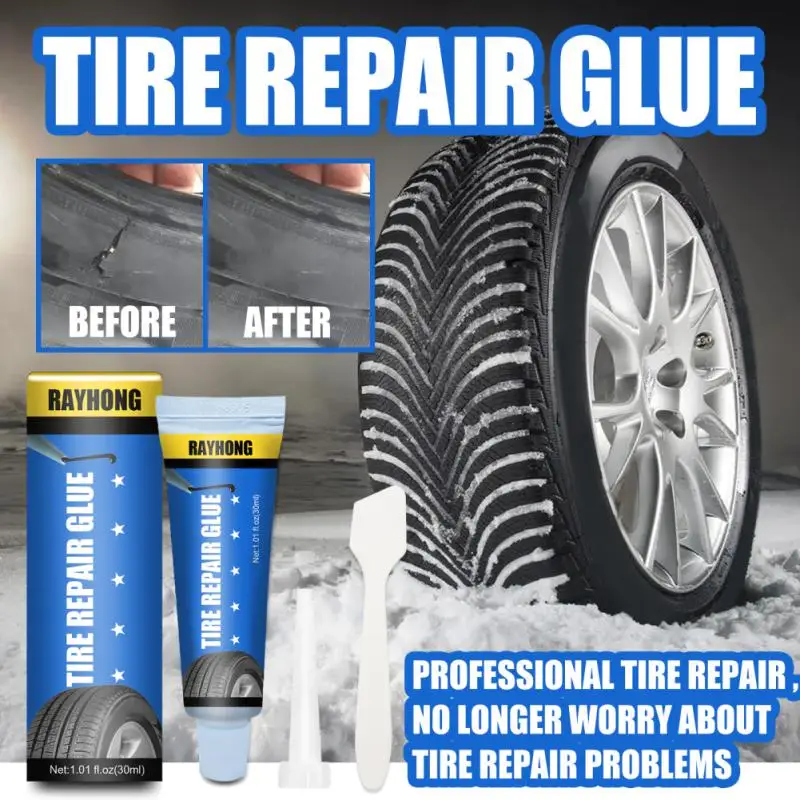
You can plug or patch your punctured tire as long as the hole is not bigger than a quarter of an inch and the location of the hole is not too close to the sidewall.
Exercise caution when using rubber cement and be sure to safely store it when you’re finished by sealing it completely. Make sure you remove the tire from the wheel and check for other holes and issues before tire plugging or patching.
Did you find this guide helpful? Then feel free to have a look at others:
How Much Is It To Repair A Tire
How To Seal Tire Bead
How Do You Patch A Tire
How Long Does A Tire Patch Last
How Much Does It Cost To Patch A Tire
How To Seal A Tire On A Rim
How Close To The Sidewall Can You Patch A Tire
How To Fix Flat Spots On Tires
How To Vulcanize A Tire
How To Fix Hole In Tire
How Much Sealant Per Tire
How To Use Slime Tire
How Do Tires Get Dry Rot
How To Fix Dry Rotted Tires
How To Fill Tires With Foam
You can easily repair your tires by plugging them. But is rubber cement necessary while plugging a tire? Can you do the repair without it? Let’s find out.
But is rubber cement necessary while plugging a tire? Can you do the repair without it? Let’s find out.
Tires play an important role while driving vehicles on roads. But sometimes, while driving, various sharp objects on roads like a nail or a piece of glass or a razor blade may puncture your tires and cause them to lose all the air. There are multiple ways to repair a tire, like plugging, patching, or a combination of both plugging and patching on tires.
Plugging is one of the quickest and easiest methods to repair tires. In this method, you can repair your tires without removing the tire from your vehicle. Most car owners prefer to keep plugging kits in their cars to use them in an emergency.
You will find various types of plugging kits in the market, like with some kits with rubber cement while others have only glue.
One question that we often hear on forums and comments sections is: “Is rubber cement necessary while plugging a tire?” Yes, it’s essential because the rubber cement acts as a lubricant and helps in a better way to get the plug inside the crack or hole in the tire.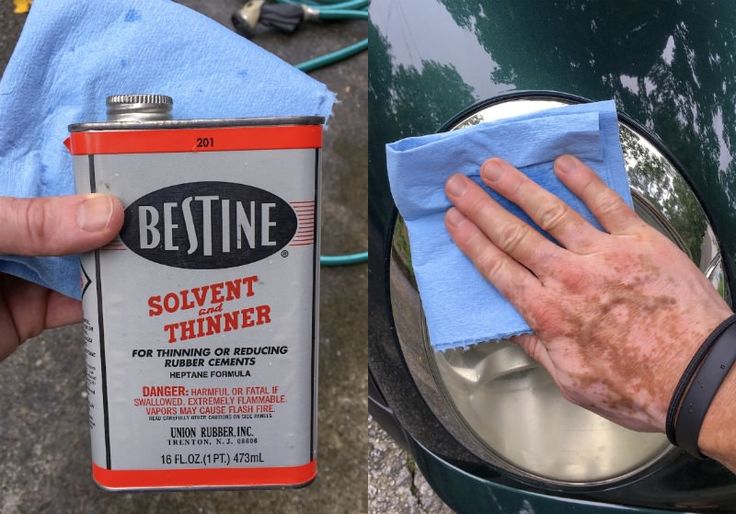 Consequently, you will have a better seal, and your tire will be able to run on the roads. This article focuses more on plugging tires. So, continue reading this article for more information.
Consequently, you will have a better seal, and your tire will be able to run on the roads. This article focuses more on plugging tires. So, continue reading this article for more information.
You might also like to read : Why Is My Front Tire Leaning In
How Do You Fix a Leaking Tire Plug?
You may encounter flat tires while moving your vehicle on the road. You can quickly repair your tire with the help of a plug kit. If you have never plugged a tire by yourself, you need to follow the below steps to learn how to use a tire plug kit.
#1. Buy A Tire Plug KitYou can easily get a tire plug kit from various online stores. The tire plug kit consists of a rasp and plug tool, plugs, rubber cement, and utility blade. You may also need pliers to remove the object from your tire.
The reamer tool is a file you need to clean the hole or the spot from where the air is leaking so that the plug can fit tightly and make a good bond with the tire.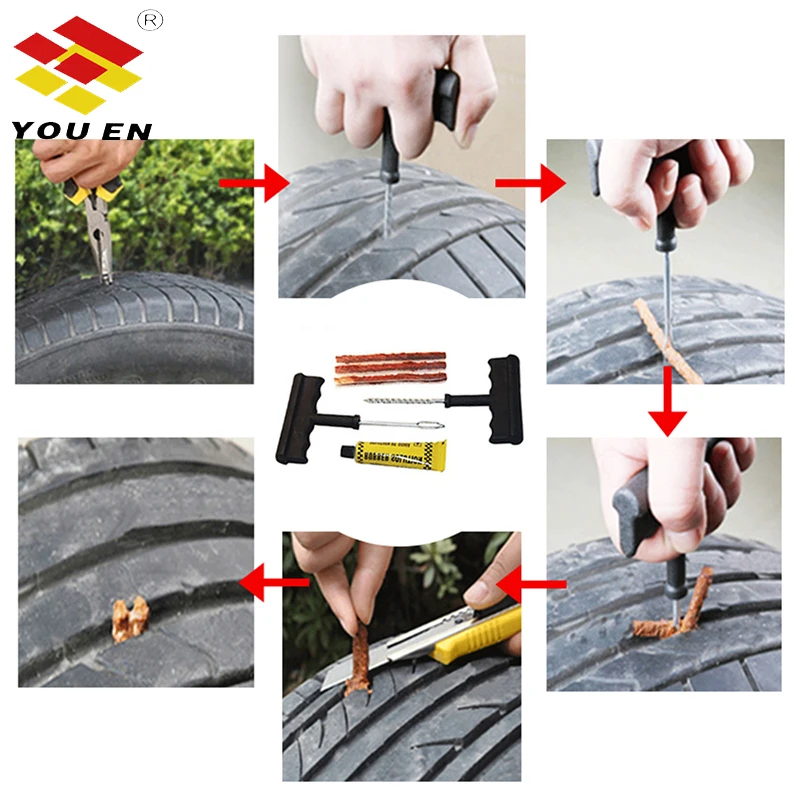 In that kit, you will see rubber strips which are a bit sticky. They are known as plugs. You will find rubber cement in the plug kit, which is pretty essential for successful plugging.
In that kit, you will see rubber strips which are a bit sticky. They are known as plugs. You will find rubber cement in the plug kit, which is pretty essential for successful plugging.
If you observe a flat tire on your vehicle, first detect the spot where the air is leaking. You can easily see the spot where the nail or screw has made its way into your tire. You can use pliers to remove the nail or screw from your tires. Sometimes it’s hard for you to find the spot even after rotating the tire of your vehicle. If you face such an issue, take an air compressor and fill your tire with air.
Once you observe that the tires on your vehicle are pressurized, remove the air compressor from the car and secure the vehicle on a jack stand by keeping the parking brake in condition.
Now take a spray bottle and fill it with soapy water. Then spray the soapy water on all parts of the tire, including valve stem, sidewalls, rim, and opening after removing the cap.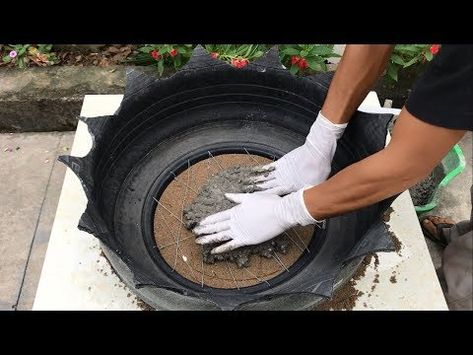
The pressurized air will try to escape from a tiny hole. As the air escapes, it will create bubbles in the soapy fluid. Observing the bubbles lets you know that this is the spot from where the air is leaking, and it needs immediate repair.
#3.Ream The Edges
You can use the reamer tool to clean the edges of the leaking hole. It will surely enhance the adhesion of the rubber tire plug. But if your plugger kit does not have a reamer tool, you may use the tip portion of the plug insertion tool to clean the leaking hole.
#4.Insert PlugOnce you clean the hole, it’s time to insert the plug. Take one plug strip and insert it on one end of the plugging tool. It may involve some twisting movement.
You need to apply some rubber cement into the plug before inserting it into the leaking hole in your tire. The cement helps in lubricating the plug, and after some time, it dries and creates a bond with the tire to have an airtight seal.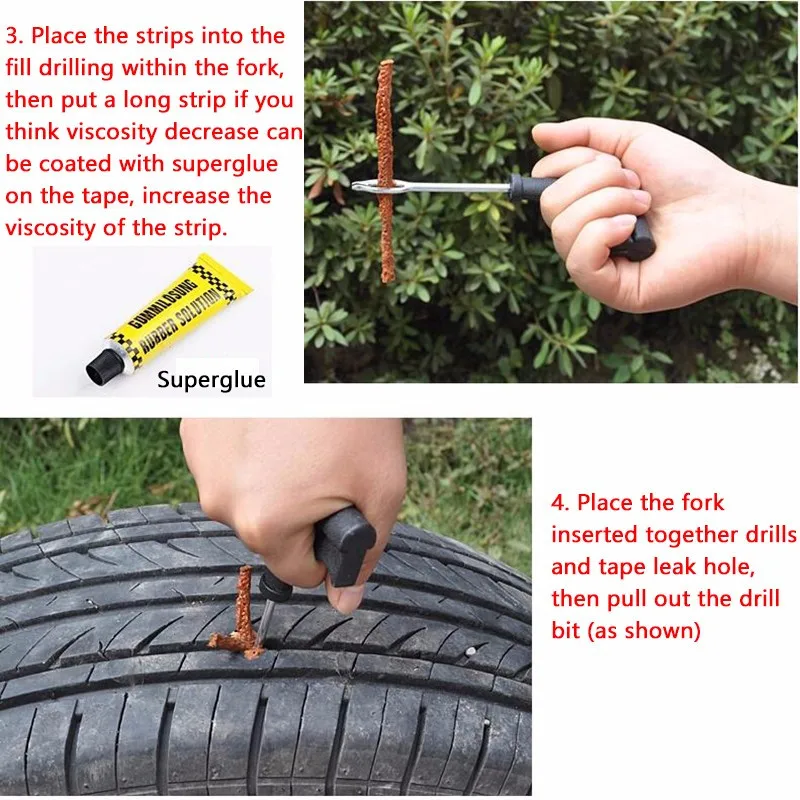
After applying the rubber cement, push the plug inside the hole. But you need to stop pushing until the plug is three by four inches outside of the plug.
#5. Pull The Tool OutNow your plug has been inserted into the leaking hole at a proper depth. So you need to take out the tool from the plugin in a very gentle way. You have to do a bit of twisting to release the rubber strip entirely from the tool.
#6. Check The Leakage Of Tire Once AgainYou have to inflate the tire to design air pressure and check for air leakage with soapy water. If you still find any leaks, you need to repeat the process or opt for other repairing methods of the tire.
Frequently Answered Questions#1. What is the rubber cement for in a tire plug kit?
The rubber cement in the tire plug kit acts as an excellent adhesive to the leaking hole of the tire. But after opening the tube for the first time, it dries out. So you cannot use it for the second time. It proves the importance of rubber cement in plugging a tire.
So you cannot use it for the second time. It proves the importance of rubber cement in plugging a tire.
You can apply the rubber cement directly on the rough surface of the tire and wait until it becomes tacky. You can also use the rubber cement in patches.
#3. How long does rubber cement take to dry on a tire plug?Rubber cement will dry in two to three minutes if the outside weather is sunny dry weather. But if you have applied a thick coat, then it may take fifteen minutes to dry.
Wrap UpYou might also like to read : Why Do Mercedes Have Different Size Tires
Sometimes you notice flat tires on your vehicle, and there is no tire shop nearby. So plugging a tire is the best way to repair a tire in an emergency. The tire plug kit is also affordable. It will cost you between $10 to $20.
I will say it’s safe to drive a plugged tire, but it’s not a permanent fix.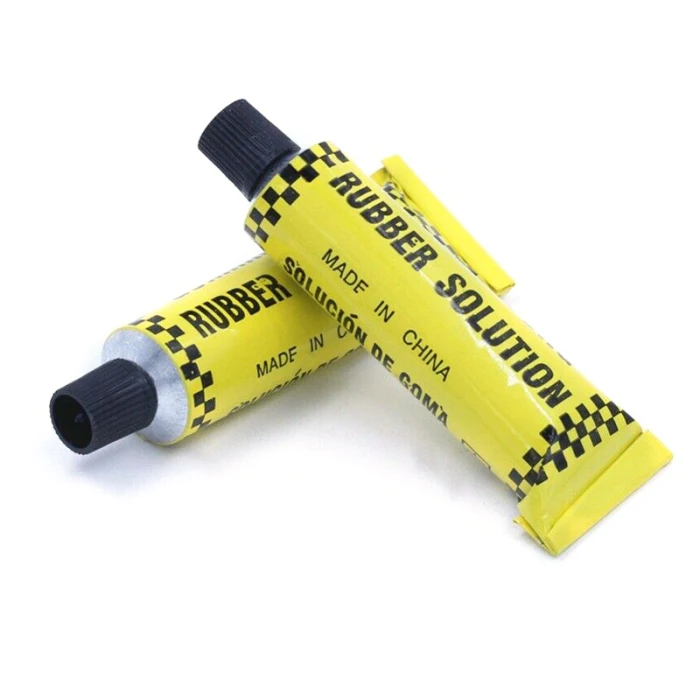 The plugs do not fill the void. As a result, water may enter inside the tires and corrode the steel belts. Again if you have poorly installed the plugs, then it will dry out with time. So try to check your tires in a local tire shop if you have repaired tires with a plugging kit.
The plugs do not fill the void. As a result, water may enter inside the tires and corrode the steel belts. Again if you have poorly installed the plugs, then it will dry out with time. So try to check your tires in a local tire shop if you have repaired tires with a plugging kit.
However, if the leak hole on your tire is more than one-fourth inch or 6mm, it’s not advisable to use a plugging kit to repair the tire. If you face such issues, then you may need to replace the whole tire. Furthermore, you should not use plugs on the sidewalls or treads of your tire.
I hope this article is informative and please don’t forget to share suggestions for this article. I would love to read your suggestions in the comment section.
Happy Driving!
90,000 overview of the best brands based on rubberContent
 )
) It forms a strong, elastic and waterproof seam, the flexibility of which remains even after hardening. Glue is widely used for repairs in everyday life and industry.
Rubber products can be repaired:
The main ingredient is rubber.
Depending on the consistency, it may be liquid or viscous. There are also two-component products. But whatever the form of release, the basic component is still dissolved rubber. But solvents can be different:
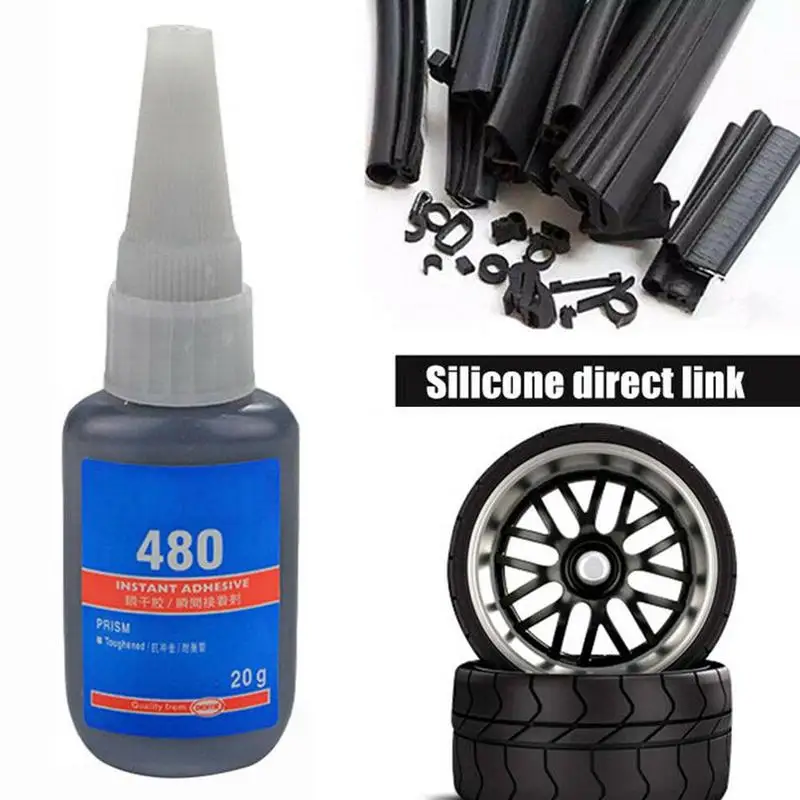 In addition to them, the glue contains esters like mineral oils or carboxylic acids.
In addition to them, the glue contains esters like mineral oils or carboxylic acids. The main difference between the adhesive for rubber parts and others is that a flexible joint is formed, which retains the plastic structure during operation.
Due to its high strength, it can bond rubber not only to rubber, but also to leather, metal, plastic and other materials.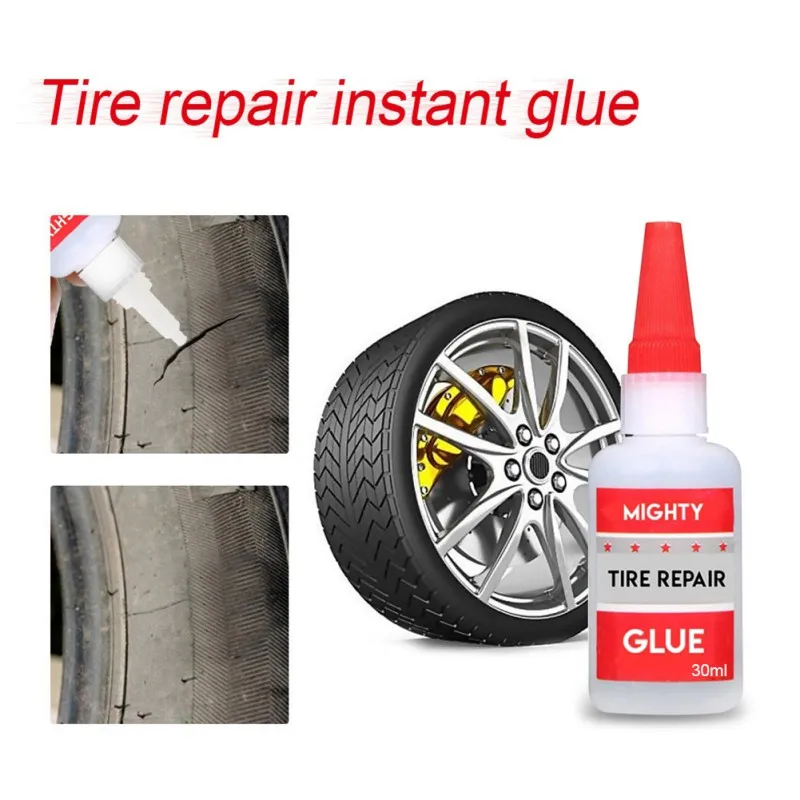 After hardening, the rubber-based adhesive resembles rubber in characteristics.
After hardening, the rubber-based adhesive resembles rubber in characteristics.
A good rubber adhesive should have the following qualities:
Universal compounds are not recommended for gluing, special glue is needed.
Adhesive varies depending on the main ingredient.
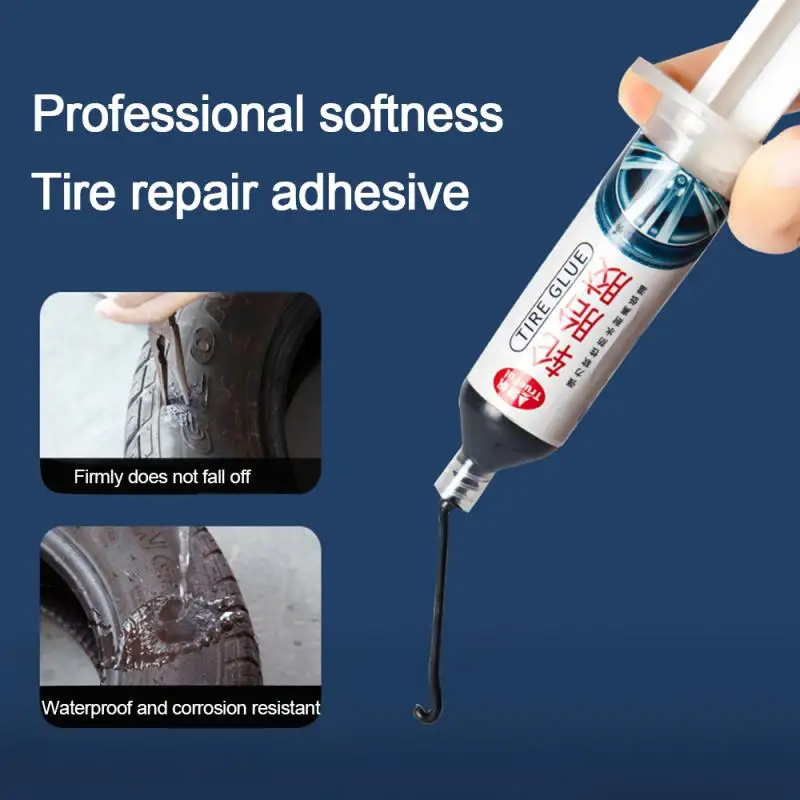
Natural rubber has low heat resistance and little resistance to external factors. In addition, the scope of its application is too limited, which became the impetus for the development of artificial rubber adhesives using innovative technologies.
According to the volume of dry residue, there are two classes of rubber compounds:
Liquid rubber is a separate type. It has the appearance of a transparent adhesive paste and a polyurethane base. Self-hardening rubber is often used as a sealant. It does not react to temperature changes, is resistant to wear, has a flexible texture and good protective characteristics.

In addition to the composition, rubber adhesive is classified according to the quality of the adhesive line, which is formed after hardening.
There are two types of adhesives depending on the curing method.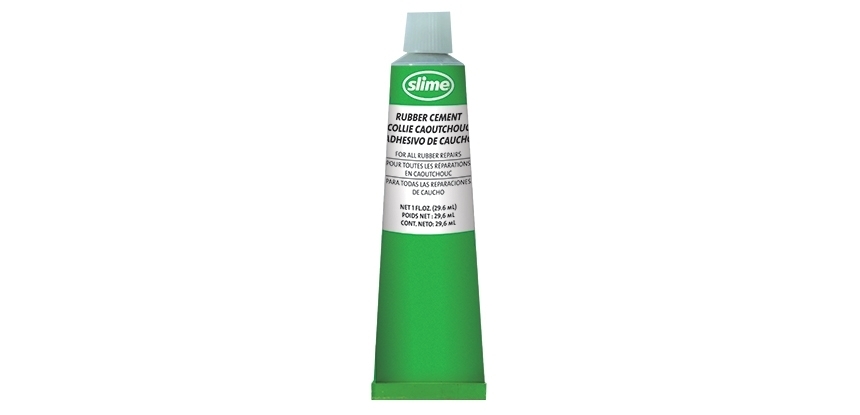
Adhesives based on rubber and bakelite are produced. Only grades 88-CA and 88-N can glue rubber with rubber. The first glue is used in the construction, automotive, shoe industry, and in everyday life. Strongly glues rubber to concrete, wood, glass, foam rubber, foam bases. 88-N is the most durable composition of the line, but a long exposure is required before use. Can bond rubber materials to metal. It is diluted with benzene to the desired consistency.
88-N is the most durable composition of the line, but a long exposure is required before use. Can bond rubber materials to metal. It is diluted with benzene to the desired consistency.
Advantages of both compositions:
Adhesive 4508 is made from rubber.
According to user reviews, 4508 is the best rubber adhesive used to repair shoes, special protection suits, fishing clothes, PVC boats.
Used in the production of rubber products and rubberized material. Reliably sticks together any chambers even without hot working as vulcanization occurs at operation.
Positive aspects:
 If you use a hardener, the seam will become even stronger;
If you use a hardener, the seam will become even stronger;
Natural rubber adhesive, easy to use. Suitable for almost any base. Forms a neat joint, so it is often used in decorative and applied arts. In minor repairs and construction, it is often used as an elastic sealant. Also used in the repair of auto cameras, to connect rubber with paper, leather.
Advantages:
Suitable for all rubber hardness and porosity, including foam. The rubber moment creates a strong, reliable seam, can tightly connect rubber with other rubber. The composition is two-component and requires preliminary preparation for work.
Pros:
The unused residue in the tube dries quickly even when closed, so the glue will soon have to be thrown away. It has good combustibility, so the glue should be used away from fire.
High strength repair compound. Glue wetsuits, kayaks, boats and other rubber watercraft. It comes in black.
Advantages:
The product is based on innovative ingredients that can seal rubber in just 1 minute. Can be bought online. The kit includes an activator that expands the capabilities of the composition. There is a Russian-language instruction. It is used in workshops for the repair of various directions.
Can be bought online. The kit includes an activator that expands the capabilities of the composition. There is a Russian-language instruction. It is used in workshops for the repair of various directions.
Involved in the manufacture of shoes for gluing leather. It has relatively low adhesive qualities.
Rubber dye, which is needed to work (color) with automotive parts. Produced in aerosol form.
Applied to the damaged area, the adhesive cures in a few minutes, making it suitable for emergency repairs, such as rubber boats.
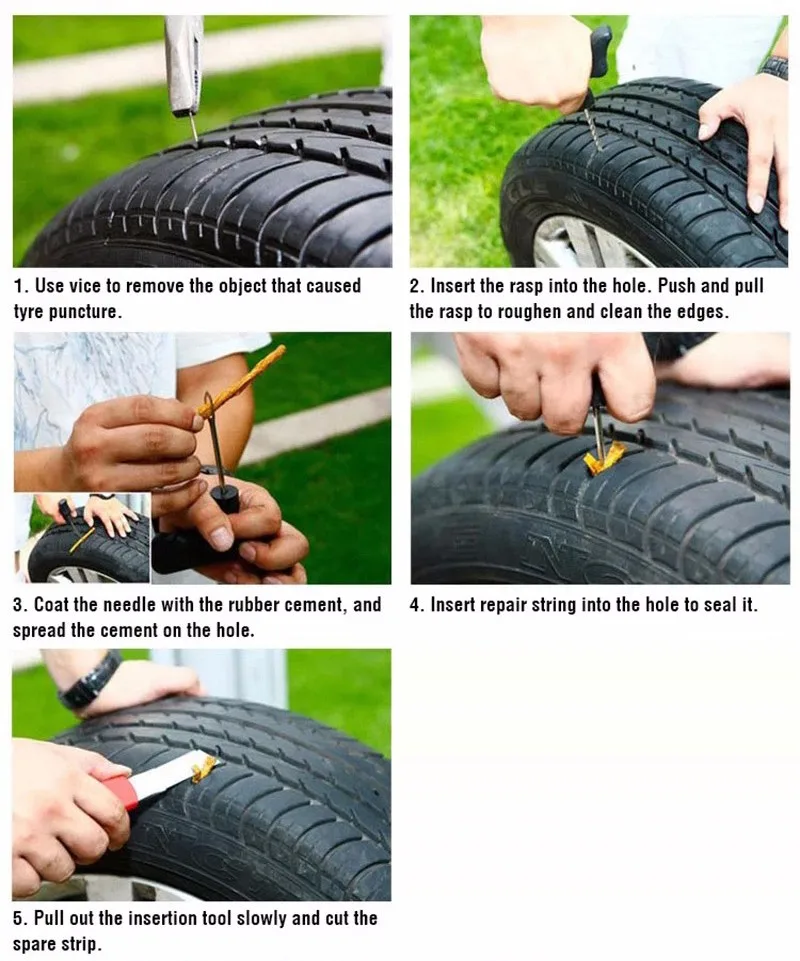 On average, the layer should be no thinner than 2 mm. 1 mm is allowed when gluing boats, repairing shoes. The mixture is applied with a brush, a thicker consistency - with a spatula. Both parts are pressed tightly against each other and held for several minutes, it is best to put under the press for a more secure fixation. Excess glue is removed with the blunt part of the knife blade or spatula.
On average, the layer should be no thinner than 2 mm. 1 mm is allowed when gluing boats, repairing shoes. The mixture is applied with a brush, a thicker consistency - with a spatula. Both parts are pressed tightly against each other and held for several minutes, it is best to put under the press for a more secure fixation. Excess glue is removed with the blunt part of the knife blade or spatula. Bonding is carried out at natural ambient temperature, but not below +5 °C. First, one part is lubricated, dries for 20 minutes, and then the procedure is repeated for both fragments. Parts are pressed with force for 2-3 minutes, while the seam will gain maximum strength no earlier than in 1-2 days.
Bonding takes only a few minutes, but the surface must be heated to t=+70…+160 °C. After, the bases are smeared with glue and connected.
If you need to glue rubber to another material, you need to select an adhesive that can form a reliable adhesion to the required surface. About all the bases with which the adhesive interacts, the manufacturer warns in the instructions on the package.
Before joining rubber to metal, such as aluminum, the surface of the latter must be cleaned of rust, oil and degreased. Rubber needs to be sanded to make the surface rough and then degreased. The agent is applied to a metal fragment, and after the time indicated on the package, another layer is applied, and only after that the rubber is pressed. The drying time of the solution is also written on the package.
Wood has a porous structure, therefore, to reduce the consumption of glue, the wooden base must first be cleaned and primed.
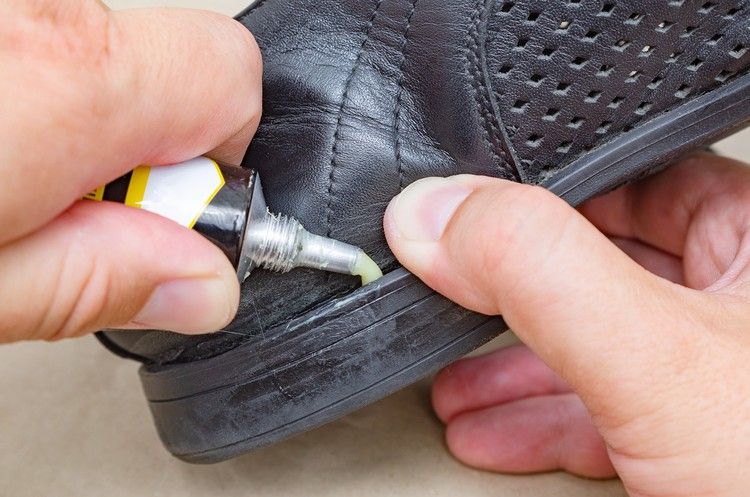
It is best to connect rubber with PVC with a mixture of 4508. The glue has good adhesion and moisture resistance, after hardening the seam becomes elastic, so PVC boats are often repaired with glue.
Mirrored from
for gluing rubber K rubber serves “ glue rubber”, and for gluing rubber with other materials (fabric, skin) use clans 908 9000 9000 “88n”, “88n”, “88n”, “88n”, “88n”, “88n”, “88n”, “88N universal waterproof, polyurethane, rubber
Glue "Master" (universal waterproof) For the manufacture and repair of shoes, gluing products made of natural and artificial leather, rubber , plastics,
Used for bonding of rubbers with rubbers, metals, including painted ones, glass, wood and other materials. Adhesive excellent adhesion
Adhesive excellent adhesion
Our adhesives are used in the automotive, furniture, footwear and construction industries. They are used for bonding rubber with glass,
Special adhesive grade 88-NT was developed on the basis of the well-known adhesive grade 88, while maintaining the main qualities of the latter and obsolescence of its shortcomings, in particular
Metal-to-metal and metal-to-rubber adhesive Loctite 480, 20 g. Detailed product/service information and supplier. Price and terms of delivery.
They are used both for bonding unvulcanized rubber with subsequent vulcanization, and for bonding vulcanized rubber .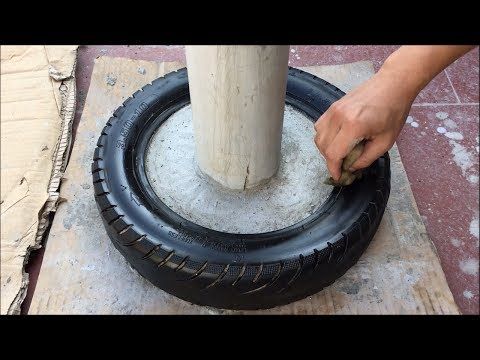 Adhesives hot
Adhesives hot
Glue NT-150-1. TU 38105789-87. Designed for cold bonding of rubber based on rubbers with metals, if rubber contains 15 parts of Ideal for bonding rubber to various materials: concrete
Moment-1 - universal contact waterproof adhesive for bonding in various combinations of wood, metal, rigid PVC, leather, rubber , felt,
Glue for rubber . Cement (binders for bonding ) Various adhesives commonly used for bonding porcelain, earthenware, glass,
At Closing objects made of wood, leather and rubber Smooth surfaces of the seams are made rough, Glue for gluing glass and crystal products 908 9022 Instant adhesive Loctite 406 for fast bonding rubber (including EPDM) Loctite 406 - adhesive for bonding hard bonding rubber ,
Rubber glue is used for bonding of rubber with rubber, metals, including painted, glass, wood and other surfaces.